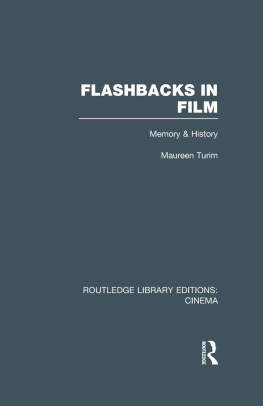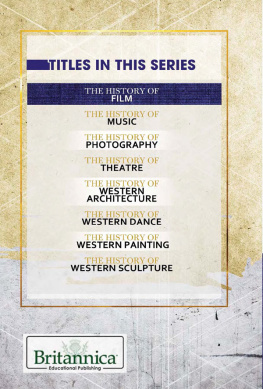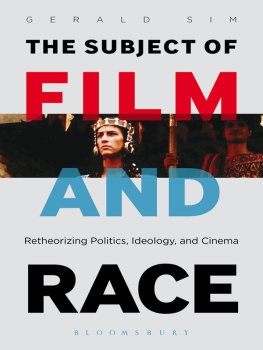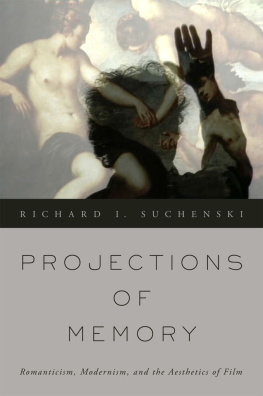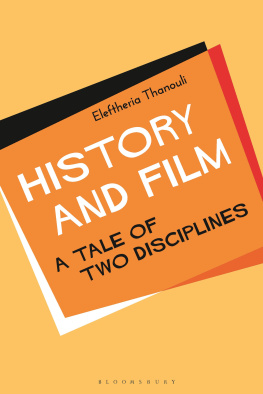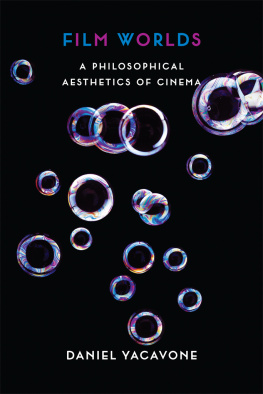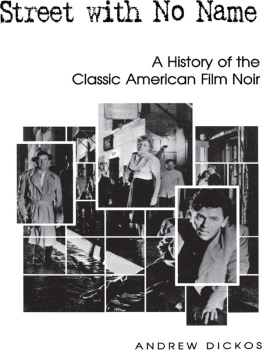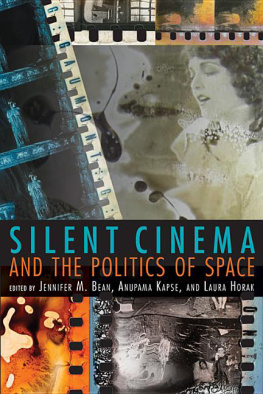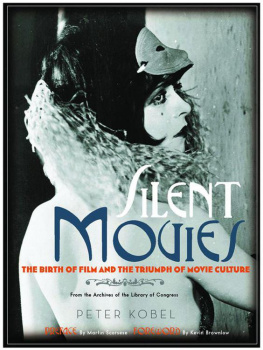ROUTLEDGE LIBRARY EDITIONS:
CINEMA
Volume 39
FLASHBACKS IN FILM
First published in 1989
This edition first published in 2014
by Routledge
2 Park Square, Milton Park, Abingdon, Oxon, OX14 4RN
Simultaneously published in the USA and Canada
by Routledge
711 Third Avenue, New York, NY 10017
Routledge is an imprint of the Taylor & Francis Group, an informa business
1989 Routledge, Chapman and Hall, Inc.
All rights reserved. No part of this book may be reprinted or reproduced or utilised in any form or by any electronic, mechanical, or other means, now known or hereafter invented, including photocopying and recording, or in any information storage or retrieval system, without permission in writing from the publishers.
Trademark notice: Product or corporate names may be trademarks or registered trademarks, and are used only for identification and explanation without intent to infringe.
British Library Cataloguing in Publication Data
A catalogue record for this book is available from the British Library
ISBN: 978-0-415-83865-8 (Set)
eISBN: 978-1-315-85201-0 (Set)
ISBN: 978-0-415-72821-8 (Volume 39)
eISBN: 978-1-315-85176-1 (Volume 39)
Publishers Note
The publisher has gone to great lengths to ensure the quality of this book but points out that some imperfections from the original may be apparent.
Disclaimer
The publisher has made every effort to trace copyright holders and would welcome correspondence from those they have been unable to trace.
Published in 1989 by
Routledge
An imprint of Routledge, Chapman and Hall, Inc.
29 West 35 Street
New York, NY 10001
Published in Great Britain by
Routledge
11 New Fetter Lane
London EC4P 4EE
Copyright 1989 by Routledge, Chapman and Hall, Inc.
Printed in the United States of America
All rights reserved. No part of this book may be reprinted or reproduced or utilized in any form or by any electronic, mechanical or other means, now known or hereafter invented, including photocopying and recording, or in any information storage or retrieval system, without permission in writing from the publishers.
Library of Congress Cataloging in Publication Data
Turim, Maureen Cheryn, 1951
Flashbacks in film: memory and history / Maureen Turim.
p. cm.
Includes index.
ISBN 0-415-90005-0; ISBN 0-415-90006-9 (pbk.)
1. Flashbacks. 2. Memory in motion pictures. 3. Motion picturesHistory.
I. Title.
PN1995.9.F56T87 1989
British library cataloguing in publication data also available.
In memory of my father, Sol Turim,
a generous and loving man.
Contents
I wish to gratefully acknowledge the help of many individuals and institutions in the writing of this book. A semester fellowship from the State University of New York-Binghamton allowed for important research at archives and time to devote to the early stages of its writing. Several archives provided access to films that is so essential to such research: the Wisconsin Center for Film and Theater Research, the Library of Congress Motion Picture Division, the British Film Institute, the UCLA Film Archive, and the film collection at lUniversit de Paris III. These archives are a treasure and their staffs encouragement of scholarly research vital to this endeavor.
A number of friends and colleagues deserve special thanks for their suggestions of films to include in this study and for their help in access to prints or tapes; let me single out especially the generosity of Kristin Thompson, Dana Polan, David Bordwell, Richard Abel, Michael Renov, Frank Tomasulo, Mike Walsh, Paulo Cherchi Usai, Michel Marie, Sylvie Pliskin, Michle Lagny, and Scott Nygren. Dana Polan and Richard Abel deserve an additional thanks for their careful readings of my manuscript; I am grateful to have had readers who appreciated what I was trying to do while making expert suggestions. I wish to thank all my students who have challenged and delighted me through their mutual interest in cinema and in particular two students helped in the initial stages of filmography and review gathering, Lisa Dickerson and Jim Fanning. My thanks to Herman Paikoff, formerly of Path News and currently photographer at SUNY-Binghamton, for his help with photo reproductions.
To Diane Gibbons whose expert copyediting comes with the added plus of a fine background in film history and to Bill Germano who has been a most supportive editor throughout the entire process, my sincere thanks.
Personal support is also a most crucial factor, especially when it comes with intellectual stimulation, so let me also thank my friends, particularly Diane Waldman, Fina Bathrick, Elly Spiegel, David Tafler, Donna Devoist, Sidonie Smith, Don Preziosi, Fred Garber, Jane Collins, Deborah Hertz, Larry Gottheim, and Josephine Gear. To my mother Ruthanne and my sisters Shereen and Dona, love and thanks. To Scott whose love and intelligence are equally invaluable to me, and to Mika, whose babyhood is a constant flashback memory to my own as well as a discovery of her unique personality, you are special indeed.
Why a study devoted to the flashback in film? Why single out one narrative device and trace its use over eighty years of cinematic expression? The selective focus on the trope of the flashback is a way of slicing through the enormity of film history, a method for considering the aesthetic history of film as just such a diverse composite of the history of filmic forms. We will ask what role the flashback played in the history of film, in the life of various film aesthetics and particularly in the development in cinematic modernism. As complex as these issues are, the goal of this book is not simply that of a focused aesthetic history.
The flashback is particularly interesting to theoretical conceptualization of film. The flashback is a privileged moment in unfolding that juxtaposes different moments of temporal reference. A juncture is wrought between present and past and two concepts are implied in this juncture: memory and history. Studying the flashback is not only a way of studying the development of filmic form, it is a way of seeing how filmic forms engage concepts and represent ideas.
Most readers are probably familiar with what we mean by a flashback in film. For many, Hollywood classics have defined this familiarity with the flashback technique including such famous examples in Orson Welless Citizen Kane, (1941), cited in virtually every dictionary of film that attempts a definition of the flashback.of the past that intervenes within the present flow of film narrative. As we shall see shortly, there is a great deal more to be said about the definition of the flashback and the implications of this term.
Memory, in its psychoanalytic and philosophical dimensions, is one of the concepts inscribed in flashbacks. Memory surges forth, it strengthens or protects or it repeats and haunts. A plethora of depicted memories are offered across the history of flashback use, each slightly different in form, ideology, tone. Some are subjective, interiorized; others represent a telling-in-language whose degree of subjectivity might be considerably less. To analyze this constant play of difference, the films need be examined as fragments of a cinematic discourse on the minds relationship to the past and on the subjects relationship to telling his or her past.
The cinematic presentation of memory in these films can be compared with the knowledge proposed by various disciplines that research and speculation on memory processes. We shall find that this comparison shows some mirroring and some fascinating discrepancies, some anticipations of the future of science by art and some anachronisms used blithely because they correspond to some dramatic imperative of a given mode of fiction.
Next page
